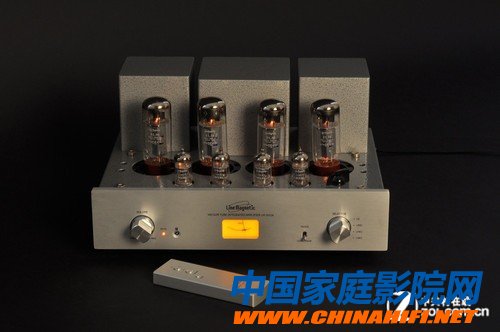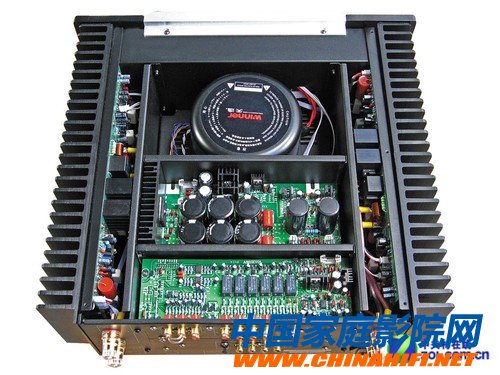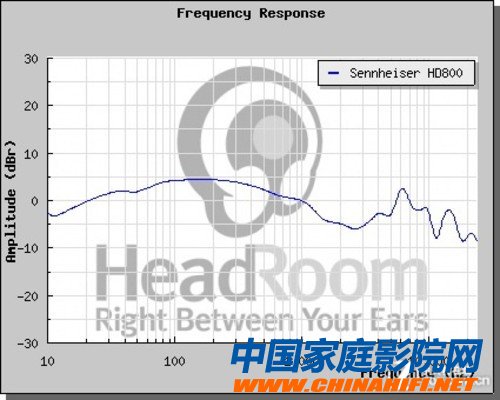For the audio industry, speakers and audio sources as well as amplifiers also have a lot of parameters, and most consumers do not understand the meaning of these parameters, the higher the better, the lower the better? And these How much influence does the parameter have on the final performance of the device sound? The following Chinese home theater network introduces the common concentration parameters:
With the digitalization of audio equipment, manufacturers have begun to pay more and more attention to the promotion of product parameters, the birth of the "King of Parameters" equipment, which is gorgeous, and some of which are really worthy of these. A good machine with super parameters, and there are many machines with almost no sound in the ear. In the era of simulation, most of the equipment never emphasized how powerful its parameters are. Even many classic products are not so good-looking, but they still suffer. The praise of countless consumers and enthusiasts.
Parameters These hard indicators are not omnipotent for audio products. It can only be said that good equipment is often ugly, but good-looking parameters do not necessarily mean that this product is good. For consumers and enthusiasts, choose If you have not heard of the product, you may also prefer products with excellent performance. But what do these parameters mean? If these parameters are high, you must have excellent sounds. Let's take a look at the following article. Let's go!
Distortion and amplifier
Amplifiers, also known as power amplifiers, are an important part of the sound system. Power amplifiers are divided into tube amplifiers and transistor amplifiers. Tube amplifiers are the amplifiers that many experienced enthusiasts relish. Although compared to ordinary transistor amplifiers, amplifiers The cost is high, the volume is large, and the power consumption is high, but it is still supported by the majority of music enthusiasts. Why?

Due to the unique harmonic distortion of the amplifier, the tube amplifier can easily restore the "song, sweet, and moist" sound of the real instrument. It is also the even harmonic distortion. The test indicators of the tube amplifier are common. Below the transistor power amplifier, the total harmonic distortion of many classic machines is even more than one percent. For transistor amplifiers, it is easy to achieve low distortion of 0.01%, but the transistor amplifier is relative to the tube. Amplifier, the sound is a bit too straightforward and stimulating. So after the digital audio source became popular in the 1980s, the tube power was put on the fever audio market, making an indelible contribution to the "cold, hard, dry" of the digital sound source.
Channel separation and presence
Channel separation is an important indicator of audio products. It refers to the degree of crosstalk between two channels. If the crosstalk is too large, the stereo stereo will be weakened. Some audio products are excellent for the pursuit of indicators. Even if it costs a lot of effort, even paying the price of affecting other aspects of sound quality, the channel separation degree is 90 to 100 decibels, which is worth not worth it?

In fact, the live music will not only have two channels. Although the two ears of life, but the two ears are not completely isolated. People who have heard the symphonic music scene know that the seats in the 10-20 row are called so-called The emperor's position, the separation of the human ear's channel is also more than 60 decibels. This is the topic of debate in the audio industry for many years. Is it meaningful to pursue the channel separation index excessively?
Jitter (distortion)
The jitter was first discovered by Toshiba engineers from the late 1980s and early 1990s. The translation is the meaning of time jitter, which is a relatively abstract concept. For example, Xiao Ming teacher attends class at 7:30 every morning. However, Xiao Ming may be in the classroom at 7:28 today, and the day after tomorrow is 7:33 to the classroom. That is to say, the class that happened on time should be advanced or delayed in the time of occurrence. It is called Xiao Ming’s timeline shaking. When the jitter is louder, for example, Xiao Ming’s teacher is half an hour late today, and half an hour earlier tomorrow, the student will complain. Similarly, the digital audio consists of 0 and 1. Signal transmission also has this problem.
The standard I2S digital audio transmission has a dedicated time signal channel. Even so, the jitter is still inevitable. So there are a variety of independent clocks to reduce jitter distortion. With the rapid development of telecommunications technology, the clock Gradually miniaturized and high-performance, the effect of jitter distortion on sound quality is gradually less important. 50 ppm clock and 10 ppm clock accuracy, when using the same monitor, users can really hear how big The difference? But the jitter has become a selling point of the fever equipment in the successful marketing of the famous audio brand and has become an important indicator of the audio market. Even some manufacturers use the temperature compensation crystal oscillator as the selling point of the equipment to speculate, which is misguided.
Signal to noise ratio and human hearing level
First, the definition of signal-to-noise ratio refers to the ratio of the normal sound signal played back by the speaker to the noise signal (power) when there is no signal. It is expressed in dB. For example, the signal-to-noise ratio of a speaker is 80 dB, that is, the output signal power is noise power. 10^8 times, the standard deviation of the output signal is 10^4 times the standard deviation of noise. The higher the signal-to-noise ratio, the smaller the noise.

The simple definition of "noise" is: "the signal generated by the device itself during processing". These signals are independent of the input signal. For MP3 players, the signal-to-noise ratio is an important parameter, which means that the source is the largest. The ratio between the undistorted sound signal strength and the simultaneous noise intensity is called the signal-to-noise ratio, or signal-to-noise ratio (Signal/Noise), usually expressed in S/N, in decibels (dB). For the player, The larger the value, of course, the better. At present, the signal-to-noise ratio of MP3 players is 60dB, 65dB, 85dB, 90dB, 95dB, etc. When we choose MP3, we generally choose 60dB or more, even if this parameter meets the requirements. It does not necessarily mean that the machine is good. After all, it is only one of the parameters to be considered in the MP3 performance parameters.
However, in terms of the level of human hearing, the sensitivity to signal-to-noise ratio is about 90dB. If the signal-to-noise ratio of the equipment is higher than 90dB, the audible change of the human ear will become smaller, but in terms of details. The performance can still be heard in the sense of hearing, but if you use a signal-to-noise ratio and 95dB compared with 105dB, there may be almost no audible changes. The signal-to-noise ratio parameter is for MP3 players. The decoder chip and the circuit determine that the decoder chip determines the highest possible signal-to-noise ratio, and the circuit tries to ensure that the signal-to-noise ratio is reduced as much as possible. However, the signal-to-noise ratio of the chip is an average value, that is, the chip manufacturer cannot Ensure that each decoder chip has the same signal-to-noise ratio value. If a decoder chip has a nominal signal-to-noise ratio of 100dB, it means that the signal-to-noise ratio of this chip may be between 98-102dB, then That is to say, if the decoder chip used by an MP3 is 100dB, then the audio output signal-to-noise ratio of the player itself cannot be higher than 102dB.
Straight frequency response curve
Many users believe that the frequency response curve of audio equipment must be straight, otherwise it must not be a good equipment. This argument is actually to be seen separately. In general, the sound source products of audio equipment, that is, CD player, DAC decoder, in the high frequency band. Generally, there are different linear shapes depending on the analog filter used. The sound source products using Butterworth filters often have 1-3 decibels of roll-off at high frequencies of 15-20 KHz. Products using Chebyshev and elliptical filters There are also some linear changes in the high frequency. Some low-end consumer audio products, such as low-end mp3 players, simply do not use analog filters, just use digital filtering to cut high frequencies above 20k, although it seems to be frequent The curve is straight, in fact, it contains a lot of high-frequency digital clutter, which makes the sense of hearing dry and chilly. This is the so-called digital sound. But for the source equipment, the so-called "digital flavor" and "simulated flavor" are not derogatory. Points, just represent their respective musical style characteristics.

The frequency response curve of the earphone is a very complicated situation. First, almost all the frequency response curves of the earphones are corrected. The adjustment of the frequency response curve of the earphones is often based on comparison. Simply discuss the frequency of a certain earphone. It is difficult to explain the problem with the curve. There are always parameters of the party technical party and the subjective king of the listening party. In fact, whoever is right and wrong has been arguing for countless years. After all, the two sides are not satisfied with each other, but for the parameters, It is really not 100% to explain how a piece of equipment, at least it is to listen to the truth, understand the parameters, have the correct sound trend and judgment ability, is the most important. More home theater and audio acoustics knowledge Welcome to the official WeChat of China Home Theater Network: cnhifi.
Automatic Labeling Machine,Bottle Labeling Machine,Automatic Bottle Labeling Machine,Automatic Label Applicator Machine
Zhijiang BSL battery technology service company , https://www.bslbatteryservice.com